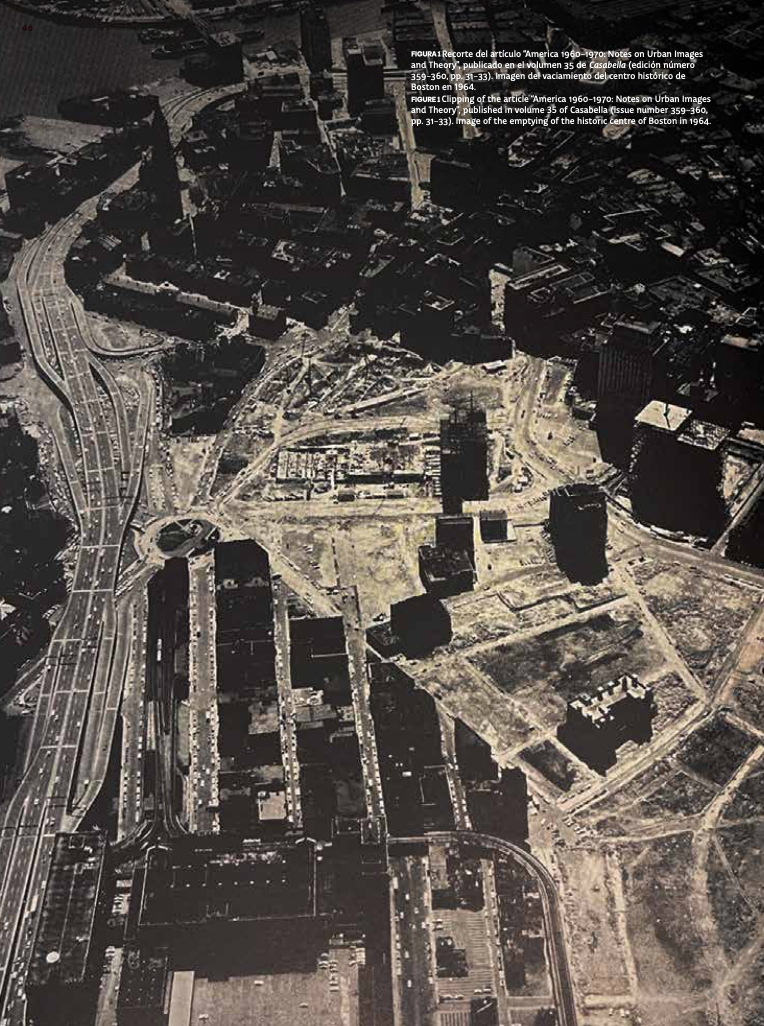ANTI-TABULA RASA: VERSO UN REGIONALISMO CRITICO: LA NEGACIÓN DE LA TOPOGRAFÍA COMO NEUTRALIZACIÓN POLÍTICA DE LA ARQUITECTURA
Barra lateral del artículo

Palabras clave:
Contenido principal del artículo
Resumen
Este texto analiza el olvidado rol politico de la teori del regionalismo critico, explorando la idea de tabula rasa como metafora de negacion ideologica. El texto contextualiza el surgimiento de esta teori en el recorrido intelectual de su autor, Kenneth Frampton, y demuestra que la expresion tabula rasa condenso la negacion de la forma y de la historia en la imagen de la anulacion de la topografi. Esto, como simbolo de la neutralizacion ideologica de la arquitectura y operando como antitesis para la formulacion de una nueva teori.
Detalles del artículo
Materia Arquitectura proporciona acceso inmediato y gratuito a todos los contenidos de esta edición electrónica, publicada simultáneamente con la edición impresa. Materia Arquitectura no cobra honorarios a los autores por ningún concepto.
Todos los contenidos de esta edición electrónica se distribuyen bajo licencia Creative Commons de “Atribución-Copartirigual 4.0 Internacional” (CC-BY-SA).
La licencia Creative Commons permite el acceso libre e inmediato al contenido y permite que cualquier usuario lea, descargue, copie, distribuya, imprima, busque o genere enlaces a los textos completos de los artículos, permitiendo también que estos puedan ser rastreados para indexarlos, pasarlos como datos a software o usarlos para cualquier otro propósito legal. Asimismo, la licencia otorga derechos de uso a quienes a su vez utilicen una licencia abierta (Creative Commons o equivalente).
Los derechos de los textos y las imágenes publicadas pertenecen a sus autores, quienes otorgan a Materia Arquitectura la licencia para su uso. La gestión de los permisos y la autorización de publicación de las imágenes (o de cualquier material) que contenga derechos de autor y sus consecuentes derechos de reproducción en esta publicación es de exclusiva responsabilidad de los autores de los artículos.
Toda vez que mencionen su origen, los autores son libres de distribuir sus artículos por otros medios. Cualquier reproducción total o parcial del material deberá citar su procedencia.
Descargas
Citas
Chicago Press.
AVERmAEtE, t., PAttEEUw, V., SzACkA, L.-C., & tEERdS, H. (2019).
Critical Regionalism Revisited. Oase (103), 1–6.
FoStER, H. (1983). The Anti-aesthetic: Essays on Postmodern
Culture. Bay Press.
FRAmPton, k. (1971). America 1960-1970: Notes on Urban
Images and Theory. Casabella, (359–360), 24–37. FRAmPton, k. (1983a). Prospects for a Critical Regionalism.
Perspecta, 20, 147–162.
FRAmPton, k. (1983b). Towards a Critical Regionalism: Six Points for an Architecture of Resistance. In H. Foster (Ed.), The Anti-Aesthetic: Essays on Postmodern Culture (pp. 13–30). Bay Press.
FRAmPton, k. (1984). Anti-tabula rasa: Verso un Regionalismo Critico. Casabella, (500), 22–25.
FRAmPton, k. (1985). Modern Architecture: A Critical History. Thames & Hudson.
FRAmPton, k. (1998). Industrialization and the Crisis in Architecture. In K. M. Hays (Ed.), Oppositions Reader: Selected Essays 1973-1984 (pp. 39–64). Princeton Architectural Press.
GREGottI, V. (1984). Esplorazioni orientate. Casabella, (500), 2–3.
HABERmAS, J. (1983). Modernity: An Incomplete Project. In H. Foster (Ed.), The Anti-Aesthetic: Essays on Postmodern Culture (pp. 3–15). Bay Press.
PoPESCU, C. (2019). Flattening History: A Prequel to the Invention of Critical Regionalism. Oase (103), 49–53.
Revisiting CASE: The Conference of Architects for the
Study of the Environment, 1964-74. (n.d.). Archinect | Massachusetts Institute of Technology (mIt). https:// archinect.com/mitarchitecture/event/revisiting-case- the-conference-of-architects-for-the-study-of-the- environment-1964-74
RUdoFSky, B. (1964). Architecture Without Architects: A Short Introduction to Non-Pedigreed Architecture. Museum of Modern Art.
SCott BRown, d. (1971). Learning from Pop. Casabella, (359–360), 14-24.
SzACkA, L.-C. (2017). Exhibiting the Postmodern. 1980 Venice Architecture Biennale. Marsilio.
SzACkA, L.-C., & PAttEEUw, V. (2019, November 22). Critical Regionalism for Our Time. Architectural Review. https://www.architectural-review.com/essays/ critical-regionalism-for-our-time
VEnICE BIEnnALE (Ed.). (1980). Architecture, 1980: The Presence of the Past. Rizzoli.
VEntURI, R. (1966). Complexity and Contradiction in Architecture. Museum of Modern Art.
VEntURI, R., IzEnoUR, S., & BRown, d. S. (1972). Learning from Las Vegas: The Forgotten Symbolism of Architectural Form. mIt Press.